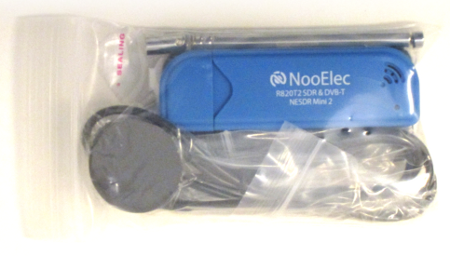It’s been a while folks, but hey, here I am again, celebrating the World Radio Day with a brand new RTL-SDR dongle! If you had never heard about software-defined radio (SDR) before, it’s probably because it’s a relatively new field for hobbyists, four years at the most (compared to the first MIT computer hacker groups of the seventies). Prior to that, the complex mathematical computations that are required to deal with radio systems had to be implemented in hardware, which made them very expensive. In 2012, though, a group of “wizards” (Eric Fry, Antti Palosaari and the Osmocom team) discovered that the Realtek chip (RTL2832U) that some DVB-T dongles incorporate could be exploited so as to provide access to the raw signal data, which enabled it to be converted into a computer-based wideband radio scanner. Its features do not equal those of a dedicated piece of SDR electronics, but it’s great for having some fun. With this RTL-SDR dongle you can tune into FM Radio, AM signals (garage door remotes), CW (morse code), unencrypted conversations (such as those used by many police and fire departments), POCSAG pagers, satellites, the ISS, etc.

The two main radio components of the RTL-SDR dongle are the tuner (R820T2), note how Nooelec advertises it on the plastic cover, which downconverts the modulated-carrier signal into baseband (grossly speaking, this can also be an intermediate frequency), and the high-speed Analog-to-Digital converter (RTL2832U) that samples it and makes it ready for further digital signal processing. This device can deal with frequencies between 24MHz and 1766MHz, with a bandwidth around 3MHz and 8 bits per sample. Further details here.
In future posts I will delve into the nature of signals, how they are represented, modulated… and the frequency up/down conversion processes to establish the wireless communication. Stay tuned! ![]()
